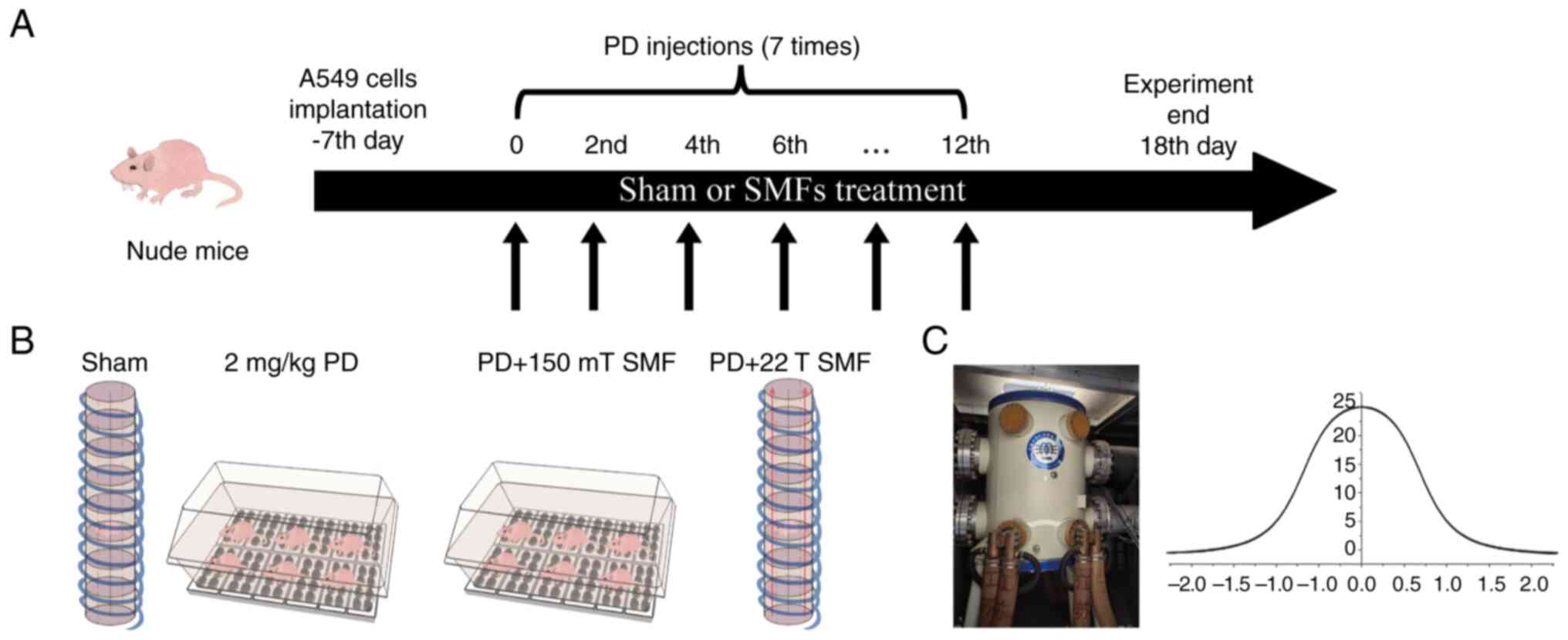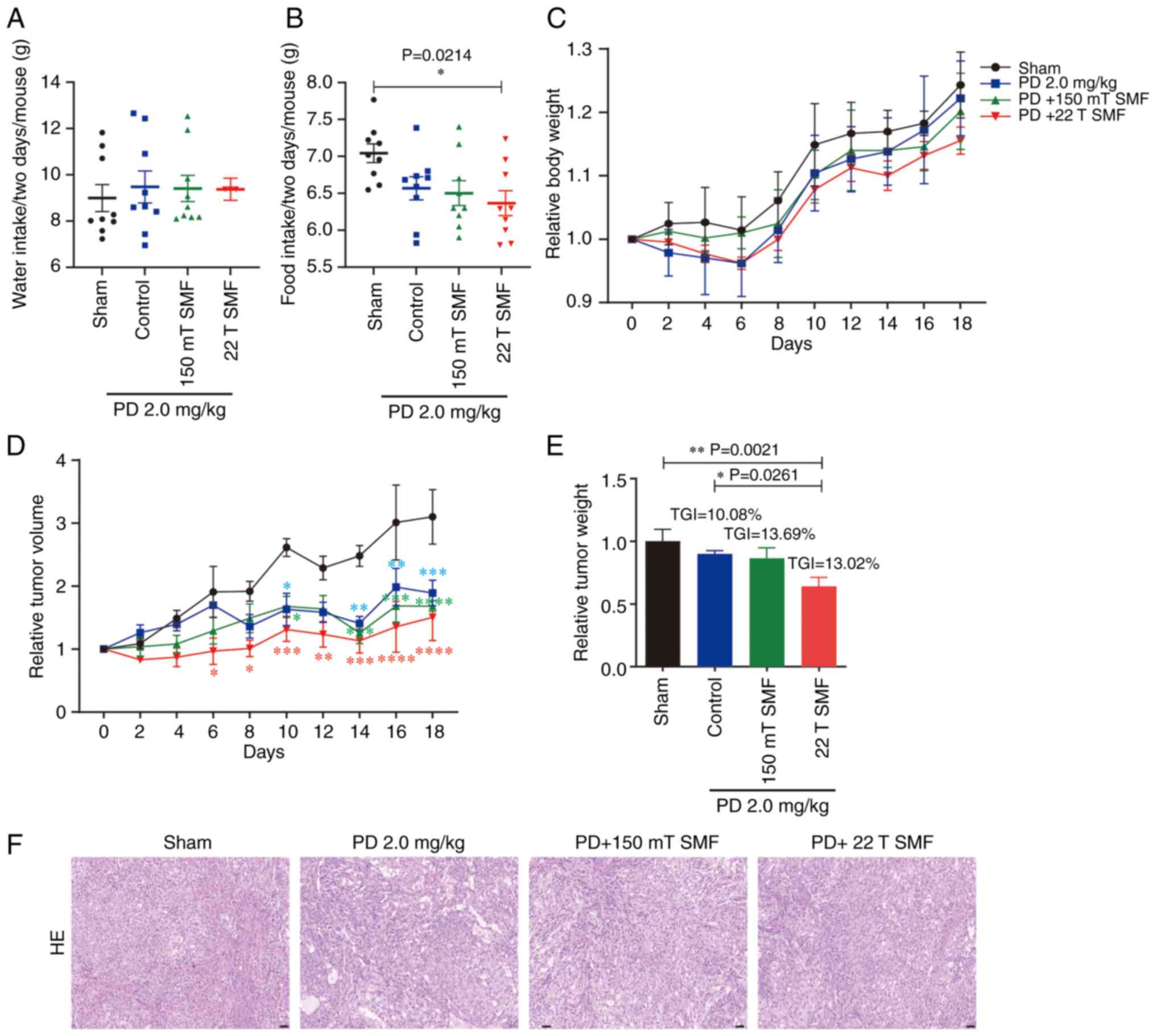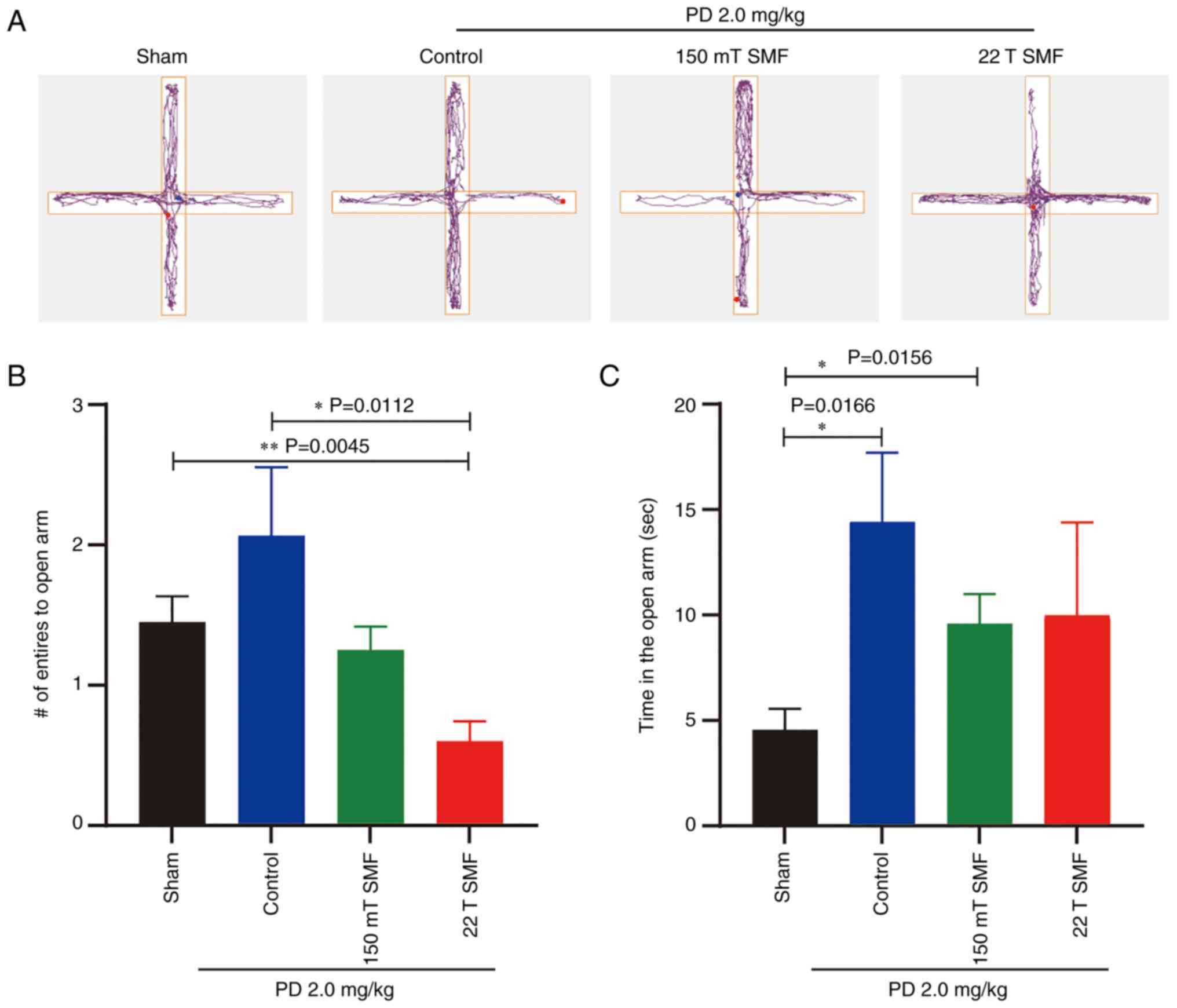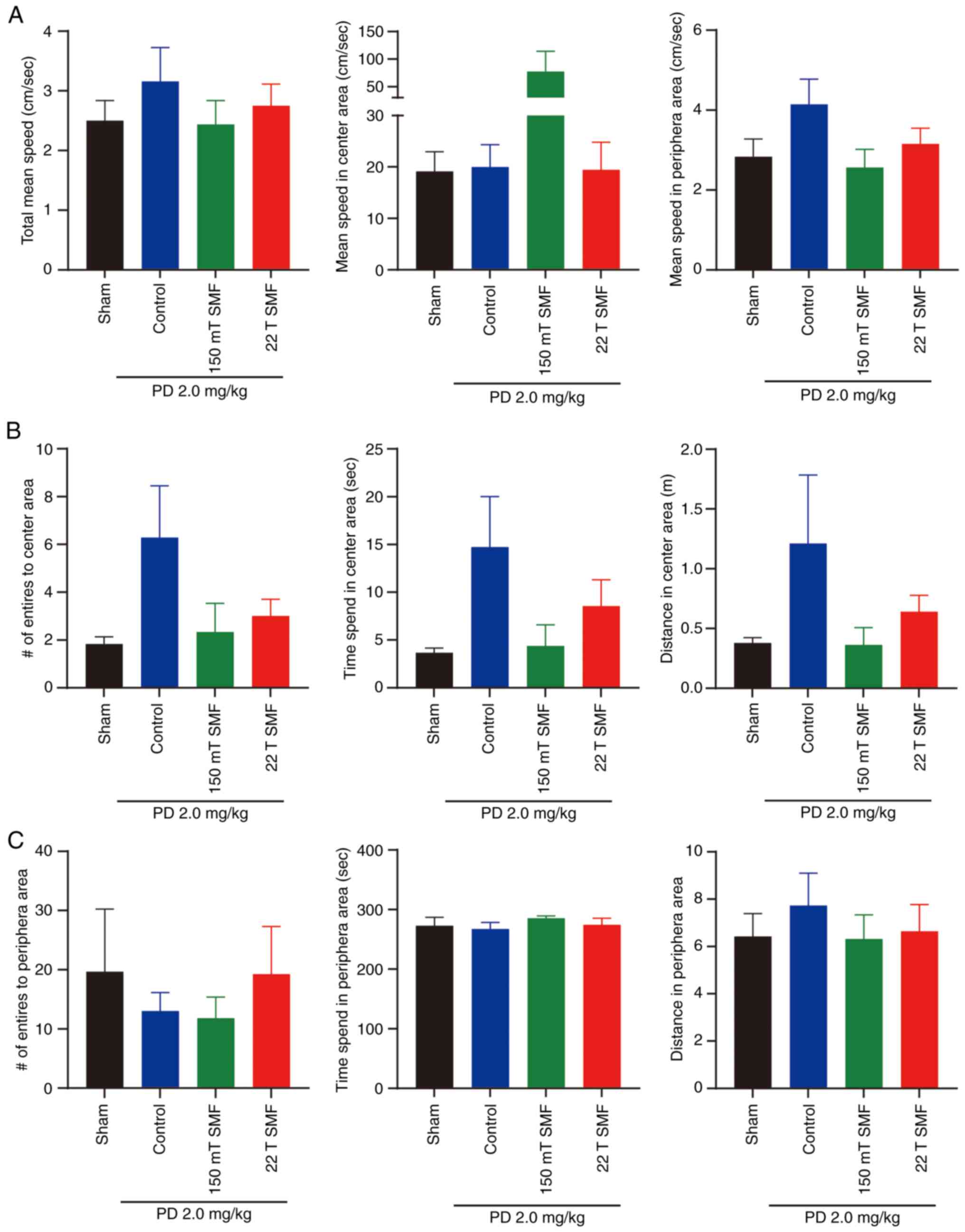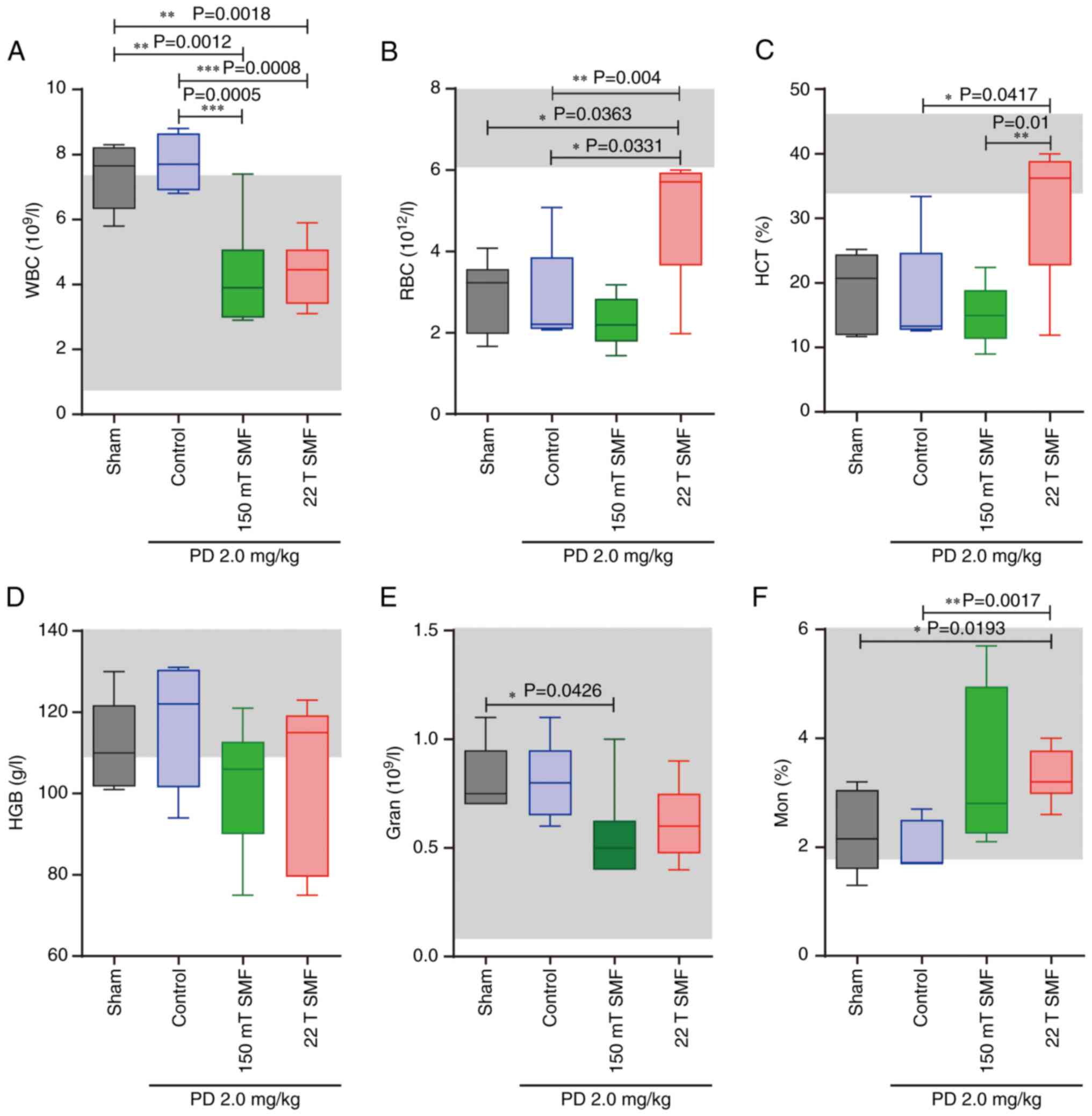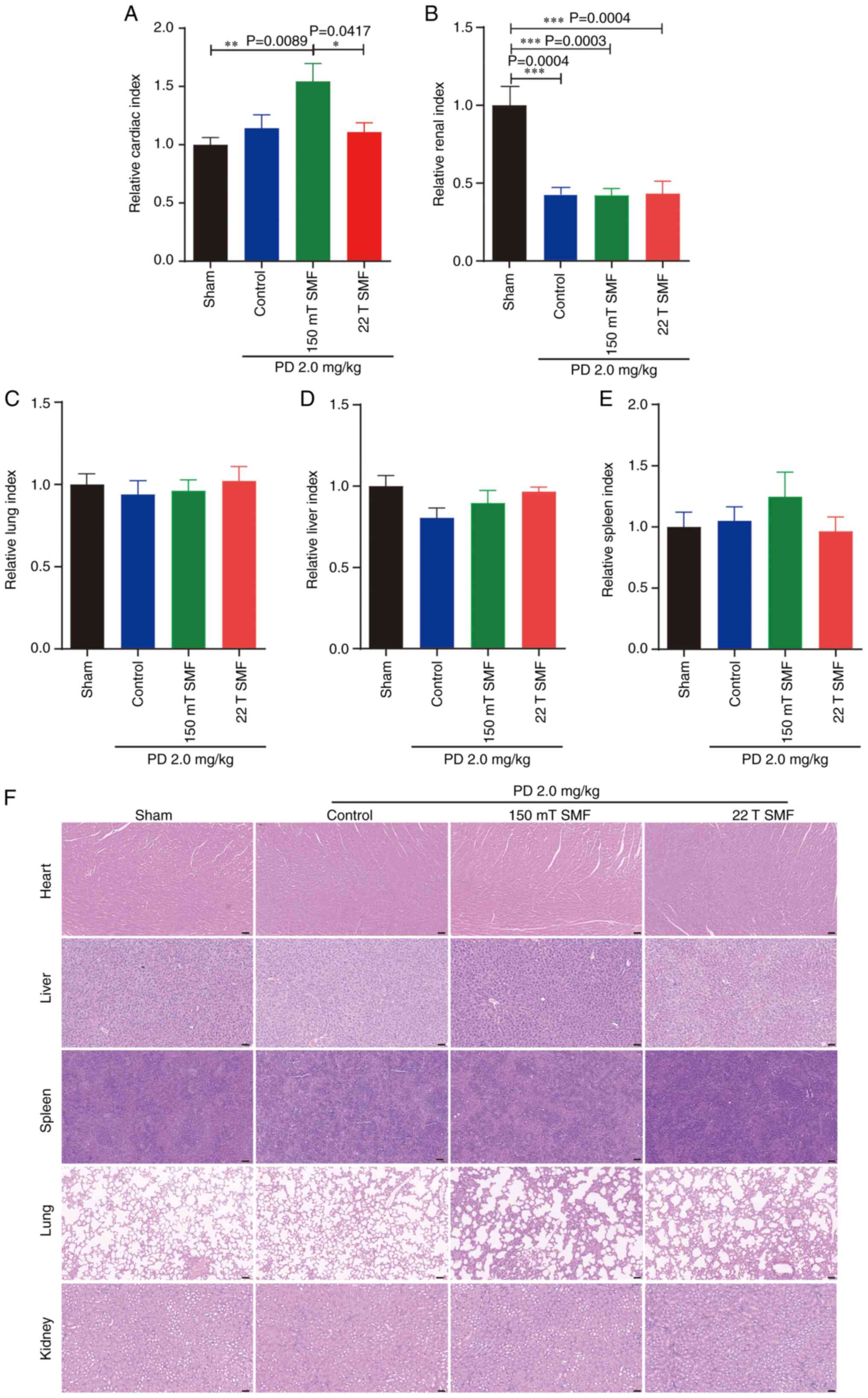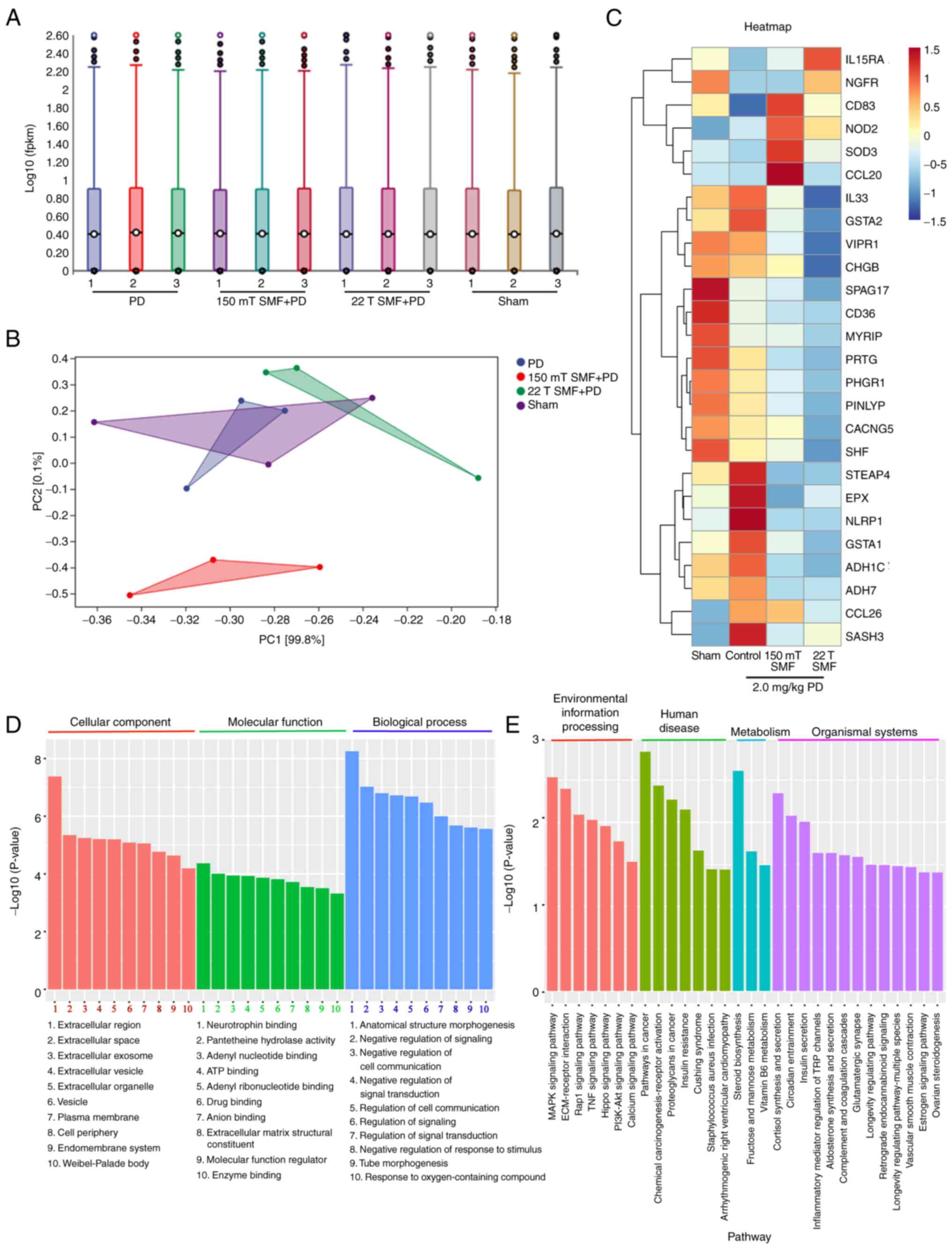|
1
|
Sarracanie M, LaPierre CD, Salameh N,
Waddington DEJ, Witzel T and Rosen MS: Low-cost high-performance
MRI. Sci Rep. 5:151772015. View Article : Google Scholar : PubMed/NCBI
|
|
2
|
Karpowicz J and Gryz K: The pattern of
exposure to static magnetic field of nurses involved in activities
related to contrast administration into patients diagnosed in 1.5 T
MRI scanners. Electromagn Biol Med. 32:182–191. 2013. View Article : Google Scholar : PubMed/NCBI
|
|
3
|
Hoff MN, McKinney A IV, Shellock FG,
Rassner U, Gilk T, Watson RE Jr, Greenberg TD, Froelich J and Kanal
E: Safety considerations of 7-T MRI in clinical practice.
Radiology. 292:509–518. 2019. View Article : Google Scholar : PubMed/NCBI
|
|
4
|
Thulborn K, Lui E, Guntin J, Jamil S, Sun
Z, Claiborne TC and Atkinson IC: Quantitative sodium MRI of the
human brain at 9.4 T provides assessment of tissue sodium
concentration and cell volume fraction during normal aging. NMR
Biomed. 29:137–143. 2016. View
Article : Google Scholar : PubMed/NCBI
|
|
5
|
Ruhm L, Avdievich N, Ziegs T, Nagel AM, De
Feyter HM, de Graaf RA and Henning A: Deuterium metabolic imaging
in the human brain at 9.4 Tesla with high spatial and temporal
resolution. Neuroimage. 244:1186392021. View Article : Google Scholar : PubMed/NCBI
|
|
6
|
Vaughan T, DelaBarre L, Snyder C, Tian J,
Akgun C, Shrivastava D, Liu W, Olson C, Adriany G, Strupp J, et al:
9.4T human MRI: Preliminary results. Magn Reson Med. 56:1274–1282.
2006. View Article : Google Scholar : PubMed/NCBI
|
|
7
|
Nagel AM, Umathum R, Rösler MB, Ladd ME,
Litvak I, Gor'kov PL, Brey WW and Schepkin VD: (39) K and (23) Na
relaxation times and MRI of rat head at 21.1 T. NMR Biomed.
29:759–766. 2016. View
Article : Google Scholar : PubMed/NCBI
|
|
8
|
Schepkin VD, Bejarano FC, Morgan T,
Gower-Winter S, Ozambela M Jr and Levenson CW: In vivo magnetic
resonance imaging of sodium and diffusion in rat glioma at 21.1 T.
Magn Reson Med. 67:1159–1166. 2012. View Article : Google Scholar : PubMed/NCBI
|
|
9
|
Yilmaz S: The safety of high-field MRI?
Int J Occup Environ Med. 5:63–64. 2014.PubMed/NCBI
|
|
10
|
Tian X, Wang D, Feng S, Zhang L, Ji X,
Wang Z, Lu Q, Xi C, Pi L and Zhang X: Effects of 3.5–23.0 T static
magnetic fields on mice: A safety study. Neuroimage. 199:273–280.
2019. View Article : Google Scholar : PubMed/NCBI
|
|
11
|
Franco J: Magnetic resonance imaging
safety. Radiol Technol. 91:343–356. 2020.PubMed/NCBI
|
|
12
|
Yang X, Song C, Zhang L, Wang J, Yu X, Yu
B, Zablotskii V and Zhang X: An upward 9.4 T static magnetic field
inhibits DNA synthesis and increases ROS-P53 to suppress lung
cancer growth. Transl Oncol. 14:1011032021. View Article : Google Scholar : PubMed/NCBI
|
|
13
|
Tkáč I, Benneyworth MA, Nichols-Meade T,
Steuer EL, Larson SN, Metzger GJ and Uğurbil K: Long-term
behavioral effects observed in mice chronically exposed to static
ultra-high magnetic fields. Magn Reson Med. 86:1544–1559. 2021.
View Article : Google Scholar : PubMed/NCBI
|
|
14
|
Khan MH, Huang X, Tian X, Ouyang C, Wang
D, Feng S, Chen J, Xue T, Bao J and Zhang X: Short- and long-term
effects of 3.5–23.0 Tesla ultra-high magnetic fields on mice
behaviour. Eur Radiol. 32:5596–5605. 2022. View Article : Google Scholar : PubMed/NCBI
|
|
15
|
Tian X, Lv Y, Fan Y, Wang Z, Yu B, Song C,
Lu Q, Xi C, Pi L and Zhang X: Safety evaluation of mice exposed to
7.0–33.0 T high-static magnetic fields. J Magn Reson Imaging.
53:1872–1884. 2021. View Article : Google Scholar : PubMed/NCBI
|
|
16
|
Tian X, Wang D, Zha M, Yang X, Ji X, Zhang
L and zhang X: Magnetic field direction differentially impacts the
growth of different cell types. Electromagn Biol Med. 37:114–125.
2018. View Article : Google Scholar : PubMed/NCBI
|
|
17
|
Wang S, Luo J, Lv H, Zhang Z, Yang J, Dong
D, Fang Y, Hu L, Liu M, Liao Z, et al: Safety of exposure to high
static magnetic fields (2 T-12 T): A study on mice. Eur Radiol.
29:6029–6037. 2019. View Article : Google Scholar : PubMed/NCBI
|
|
18
|
Lv Y, Fan Y, Tian X, Yu B, Song C, Feng C,
Zhang L, Ji X, Zablotski V and Zhang X: The anti-depressive effects
of ultra-high static magnetic field. J Magn Reson Imaging.
56:354–365. 2022. View Article : Google Scholar : PubMed/NCBI
|
|
19
|
Tian X, Wang C, Yu B, Fan Y, Zhang L and
Zhang X: 9.4 T static magnetic field ameliorates imatinib
mesylate-induced toxicity and depression in mice. Eur J Nucl Med
Mol Imaging. 50:314–327. 2023. View Article : Google Scholar : PubMed/NCBI
|
|
20
|
Yu X, Ji X, Fan Y, Yu B, Wang X, Feng C,
Zhang L, Song C and Zhang X: Static magnetic fields protect against
cisplatin-induced kidney toxicity. Antioxidants (Basel). 12:732022.
View Article : Google Scholar : PubMed/NCBI
|
|
21
|
Begnini KR, Moura de Leon PM, Thurow H,
Schultze E, Campos VF, Martins Rodrigues F, Borsuk S, Dellagostin
OA, Savegnago L, Roesch-Ely M, et al: Brazilian red propolis
induces apoptosis-like cell death and decreases migration potential
in bladder cancer cells. Evid Based Complement Alternat Med.
2014:6398562014. View Article : Google Scholar : PubMed/NCBI
|
|
22
|
Rahmani AH, Alzohairy MA, Khan MA and Aly
SM: Therapeutic implications of black seed and its constituent
thymoquinone in the prevention of cancer through inactivation and
activation of molecular pathways. Evid Based Complement Alternat
Med. 2014:7246582014. View Article : Google Scholar : PubMed/NCBI
|
|
23
|
Tada A, Kaneiwa Y, Shoji J and Shibata S:
Studies on the saponins of the root of Platycodon grandiflorum A.
De Candolle. I. Isolation and the structure of platycodin-D. Chem
Pharm Bull (Tokyo). 23:2965–2972. 1975. View Article : Google Scholar : PubMed/NCBI
|
|
24
|
Li W, Liu Y, Wang Z, Han Y, Tian YH, Zhang
GS, Sun YS and Wang YP: Platycodin D isolated from the aerial parts
of Platycodon grandiflorum protects alcohol-induced liver injury in
mice. Food Funct. 6:1418–1427. 2015. View Article : Google Scholar : PubMed/NCBI
|
|
25
|
Lee WH, Gam CO, Ku SK and Choi SH: Single
oral dose toxicity test of platycodin d, a saponin from platycodin
radix in mice. Toxicol Res. 27:217–224. 2011. View Article : Google Scholar : PubMed/NCBI
|
|
26
|
Khan M, Maryam A, Zhang H, Mehmood T and
Ma T: Killing cancer with platycodin D through multiple mechanisms.
J Cell Mol Med. 20:389–402. 2016. View Article : Google Scholar : PubMed/NCBI
|
|
27
|
Chun J and Kim YS: Platycodin D inhibits
migration, invasion, and growth of MDA-MB-231 human breast cancer
cells via suppression of EGFR-mediated Akt and MAPK pathways. Chem
Biol Interact. 205:212–221. 2013. View Article : Google Scholar : PubMed/NCBI
|
|
28
|
Zhou R, Lu Z, Liu K, Guo J, Liu J, Zhou Y,
Yang J, Mi M and Xu H: Platycodin D induces tumor growth arrest by
activating FOXO3a expression in prostate cancer in vitro and in
vivo. Curr Cancer Drug Targets. 14:860–871. 2015. View Article : Google Scholar : PubMed/NCBI
|
|
29
|
Ye Y, Han X, Guo B, Sun Z and Liu S:
Combination treatment with platycodin D and osthole inhibits cell
proliferation and invasion in mammary carcinoma cell lines. Environ
Toxicol Pharmacol. 36:115–124. View Article : Google Scholar : PubMed/NCBI
|
|
30
|
Tang ZH, Li T, Gao HW, Sun W, Chen XP,
Wang YT and Lu JJ: Platycodin D from Platycodonis Radix enhances
the anti-proliferative effects of doxorubicin on breast cancer
MCF-7 and MDA-MB-231 cells. Chin Med. 9:162014. View Article : Google Scholar : PubMed/NCBI
|
|
31
|
Yang X, Yu B, Song C, Feng C, Zhang J,
Wang X, Cheng G, Yang R, Wang W and Zhu Y: The effect of long-term
moderate static magnetic field exposure on adult female mice.
Biology (Basel). 11:15852022.PubMed/NCBI
|
|
32
|
Schwartz DJ, Conover MS, Hannan TJ and
Hultgren SJ: Uropathogenic Escherichia coli superinfection enhances
the severity of mouse bladder infection. PLoS Pathog.
11:e10045992015. View Article : Google Scholar : PubMed/NCBI
|
|
33
|
Kasuga I, Makino S, Kiyokawa H, Katoh H,
Ebihara Y and Ohyashiki K: Tumor-related leukocytosis is linked
with poor prognosis in patients with lung carcinoma. Cancer.
92:2399–2405. 2001. View Article : Google Scholar : PubMed/NCBI
|
|
34
|
Yu B, Song C, Feng CL, Zhang J, Wang Y,
Zhu YM, Zhang L, Ji XM, Tian XF, Cheng GF, et al: Effects of
gradient high-field static magnetic fields on diabetic mice. Zool
Res. 44:249–258. 2023. View Article : Google Scholar : PubMed/NCBI
|
|
35
|
Kim TW, Song IB, Lee HK, Lim JH, Cho ES,
Son HY, Park SJ, Kim JW and Yun HI: Platycodin D, a triterpenoid
sapoinin from Platycodon grandiflorum, ameliorates
cisplatin-induced nephrotoxicity in mice. Food Chem Toxicol.
50:4254–4259. 2012. View Article : Google Scholar : PubMed/NCBI
|
|
36
|
Luo Y, Ji X, Liu J, Li Z, Wang W, Chen W,
Wang J, Liu Q and Zhang X: Moderate intensity static magnetic
fields affect mitotic spindles and increase the antitumor efficacy
of 5-FU and Taxol. Bioelectrochem. 109:31–40. 2016. View Article : Google Scholar
|
|
37
|
Zhao L, Yu Z and Zhao B: Mechanism of
VIPR1 gene regulating human lung adenocarcinoma H1299 cells. Med
Oncol. 36:912019. View Article : Google Scholar : PubMed/NCBI
|
|
38
|
Moody TW, Leyton J, Chan D, Brenneman DC,
Fridkin M, Gelber E, Levy A and Gozes I: VIP receptor antagonists
and chemotherapeutic drugs inhibit the growth of breast cancer
cells. Breast Cancer Res Treat. 68:55–64. 2001. View Article : Google Scholar : PubMed/NCBI
|
|
39
|
Silverstein RL and Febbraio M: CD36, a
scavenger receptor involved in immunity, metabolism, angiogenesis,
and behavior. Sci Signal. 2:re32009. View Article : Google Scholar : PubMed/NCBI
|
|
40
|
Guan F, Zhang T, Liu X, Han W, Lin H, Li
L, Chen G and Li T: Evaluation of voltage-dependent calcium channel
γ gene families identified several novel potential susceptible
genes to schizophrenia. Sci Rep. 6:249142016. View Article : Google Scholar : PubMed/NCBI
|















